photoshop or illustrator for logos
Why Logos Should Be Designed in Adobe Illustrator Over Photoshop and InDesign
In the arena of graphic design, there are a number of quality software programs that allow users to create stunning designs for an array of applications. Adobe Illustrator, Photoshop and InDesign are easily the most widely used of the available software, however, what the general public might not understand is that each of these design programs is uniquely specialized for a niche set of tasks. In short, not all programs are created equal.
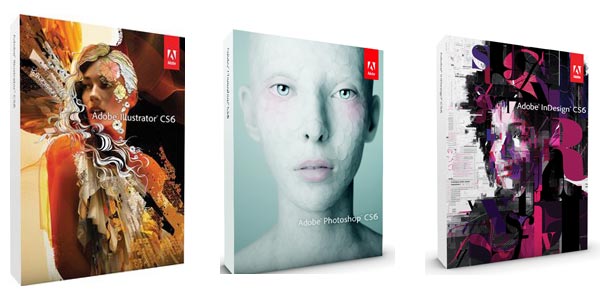
Sure, while one program may be able to loosely achieve the feats of the others, there are inherent strengths and weaknesses within these software programs that cause for one to be a more appropriate tool than the other, for any given task. It's really a matter of evaluating the breadth of your project and your desired design deliverables, and then identifying the best tool for the job.
Specifically referring to logo design, it's extremely common for clients to request that designers use Adobe Photoshop for the project, so that they may be able to edit the logo themselves in the future. While this makes sense in the fact that Photoshop is a more accessible and user-friendly program, thus preferred by novice designers, it simply isn't the appropriate tool for professional logo design.
The question then becomes why not?
Though the answer may not be simple, it is distinct. With that, we've decided to elaborate on the debate; discussing the strengths and weaknesses of the three design programs, their limitations and most importantly, the major differences between them that ultimately determines their correct uses.
Adobe Illustrator – Built for Logo Design:
The most distinct characteristic of Illustrator is that it is a vector drawing tool, meaning, the output file is a vector graphic that can be resized to any degree, without losing any quality. As you may have guessed, this is absolutely essential for logo design because of the dynamic diversity of its applications – you need the logo to function in spaces as small as a business card but also as big as a billboard. Conveniently, vector files allow for you to shrink or grow the finished design without any deterioration of graphic integrity.
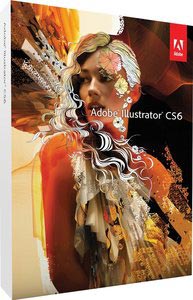
More About Vector Files:
For a more in-depth explanation of how exactly vector files work, the software essentially uses a mathematical solution to plot paths and strokes on an X and Y axis, within the given work area, to establish "control points" that universally control the shapes during the design process. When the design is complete, it is saved to a vector format such as Adobe AI or EPS. These file formats can be considered the master files, which are fully editable in the software in which they were created.
If that wasn't enough, a further and reasonable explanation of vector graphics can be found here→ https://en.wikipedia.org/wiki/Vector_graphics
Illustrator is also equipped with excellent drawing capabilities that make it the supreme method for crafting more organic, free-flowing forms that are beyond the basic presets of circles and squares. Although clients might be intimidated by these advanced features, the program's unique ability to draw next-level shapes and then save them as a vector file that can be liberally resized, without the loss of quality, makes Illustrator the most apt tool and the clear software of choice for professional logo design.
Adobe Photoshop – Strengths & Weaknesses:
As the name would suggest, Photoshop is the master when it comes to photo manipulation and editing. Because of this strength, it is therefore the preferred tool when designing anything that contains photos such as brochures, posters, postcards, flyers, etc.

Think of it this way; by contrast, Illustrator is best for creating, from scratch, the individual elements that are then laid out within Photoshop to form a greater, more collective document. While Illustrator works mainly with vector files, Photoshop is primarily a raster-based program that produces bitmaps.
More About Raster Graphics:
Raster graphics are synonymous with bitmap graphics, as both essentially refer to computer images that are formed by way of a rectangular grid of pixels or individual points of color.
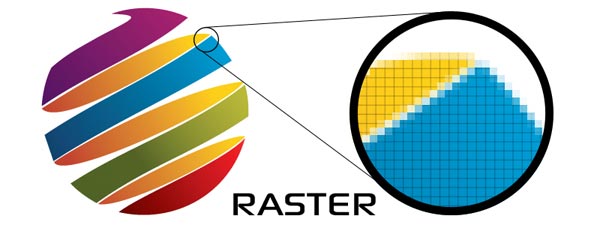
Source:printcnx.com If that wasn't enough, a further and reasonable explanation of raster graphics can be found here→ https://en.wikipedia.org/wiki/Raster_graphics While Photoshop is not the best for creating professional logos, primarily because of its lack of vector drawing abilities, it is still a potent program. It's a fantastic application for photographers because of the amazing editing controls that are available for manipulating photographs, as well as, it's a popular program for untrained designers because of the built-in creative filters that allow even a novice user to make something look good with very little effort.
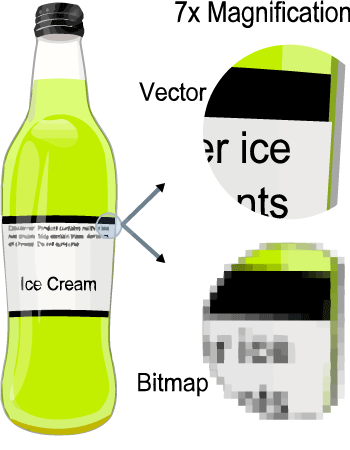
Source: wikipedia Further, because of its bitmap base, Photoshop is great for web designers because it allows you to optimize graphics for use online, resulting in smaller file sizes and subsequently quicker page loading. Web designers can also appreciate that Photoshop provides a relatively easy forum for slicing graphics to form individual online elements, such as backgrounds and buttons, for laying out web pages and wire frames. It's safe to say the learning curve for Photoshop is ultimately quite flat and because it's generally cheaper to acquire than Illustrator, it tends to invite less experienced hobbyists than it does seasoned logo design professionals. Yes, for all of Photoshop's many strengths in general design, when it comes to logo design, it has some weaknesses to be addressed. Above all, the glaring difference here is that when bitmap files are enlarged, they lose quality. As the individual bits get larger, at a certain point in the enlarging process you begin to see a ragged edge (the result of the individual squares that make up the bitmap design, as opposed to a smooth edge formed by a vector image). Obviously, this perceived pixilation becomes a substantial problem when growing an image to the size of a billboard. Knowing this, when it comes to the application of logo design, Photoshop simply isn't a suitable software. Logos need to be versatile by nature but because Photoshop does not allow you to make a vector file, you would either need to create the original file to be the size of a billboard (and shrink it down from there) or you would literally need to remake the logo each time in a new size, which are both, of course, ridiculous practices.
Adobe InDesign – Strengths & Weaknesses:
Although it's easily the least common of the three, Adobe InDesign still has it's own area of expertise. While Illustrator is ideal for the creation of individual elements and Photoshop is ideal for editing photos or laying out a single-page document, InDesign sets itself apart by being the authority on multi-page items such as book design, multiple page brochures, annual reports, catalogs, etc.
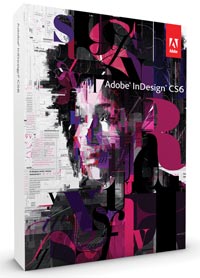
Despite the fact that it uses many of the same menu items, as the other two programs in the Adobe Creative Suite mentioned above, the scope of its abilities are really quite niche – it's not in the business of creating elements from scratch but more so specializes in laying out multiple pages of information for the print process. Yes, because it lacks drawing tools and creative photo filters, you'd likely design some of the elements for a catalog you are putting together in Illustrator and Photoshop and then lay them out in InDesign, as you prepare them for print.
Common Misconceptions of Interchangeability:
As the core inspiration for this piece, clients have many misconceptions when it comes to the interchangeability between the aforementioned programs. Although they are all part of the Adobe Creative Suite, and thus share some functional similarities, the fact of the matter is that they each yield a different file type that may or may not be compatible with their counterparts. Below are some of the most common misconceptions about working between these programs. • It is generally not understood that a design can only be edited using the software in which it was created. Yes, Photoshop and InDesign can import a finalized vector image from Illustrator and then incorporate it into the greater design but, when it comes to actually editing that individual element, it needs to be done in its native program. • Even in knowing that a designer has used Illustrator to design their logo, clients will often ask for an editable Photoshop file. This simply isn't possible – they were created in different programs and must therefore be edited in their respective programs. • Photoshop files that are imported into Illustrator will not convert to a vector format unless the Photoshop file was originally a vector file. The problem here is that there are a lot of limitations in using Photoshop for vector purposes, as it can work with certain vector graphics but is ultimately limited in what can be achieved using vectors. • Complex vector images are not possible in Photoshop so it makes it generally unsuitable for exporting vector logos (which are generally more complex than Photoshop's basic, pre-set vector shapes). In the end, Photoshop is the most common software of the bunch, which causes clients to gravitate toward it's use, however, it's important to understand that there are certain limitations when it comes to interchangeability between softwares. As uncomfortable as it might be, clients should allow their designers to create in the most appropriate program for the job, as opposed to the software they are most familiar with.
Delivering Final Files:
When it comes to delivering a final logo to a client, it must be assumed that the client does not know how to edit or convert the file and that the logo will be used on all sizes of materials, from that point forward. With that, rather than send one single file, under the dangerous assumption that the client can "take it from here," it is recommended that designers send files in the following formats, to ensure the fulfillment of all of their client's web and print needs. • EPS file – This is their master file. It is editable in Adobe Illustrator and it is a vector file, which means it can be resized without loss of quality. This is the file type that will be requested by most professionals. • PSD file – This is just an export from the EPS file and is not editable. This file can be opened in Adobe Photoshop and has a transparent background. • PNG file – This file also has a transparent background but does not require any specialist software to open it. • TIF file – This file is in CMYK color for lithographic printing. This file may appear to be a different color to the other file types but assure them not to worry; this is just because a computer monitor cannot properly display CMYK color (as all computer monitors operate in an RGB language). • JPG files – Inform the client that they will receive four different JPG files. JPG files can be opened on any computer and are perfect for home/office use, as they can be imported into Microsoft applications like Word and PowerPoint. Because JPG files do not resize well, send them three different sizes, as well as, a grayscale JPG file for Trademark registration. Many clients think in the short term about the use of their logo, so providing this variety of file formats will satisfy their needs when it comes to resizing the design for all the different mediums in the future. While the client might only intend to use the new logo on their website, where Photoshop would be suitable, history shows that once their business starts to grow, so will the breadth of their marketing plan. With this growth, it is then imperative that businesses look at the big picture for their brand. As much as they might request a Photoshop logo, for the purpose of handling any additional design edits in-house, providing an Illustrator logo that is professionally usable in the long run is far more important than providing a Photoshop logo that the client can handle themselves in the short term. Simply put, using Illustrator gives the client the most flexibility going forward with their brand. While they might not be able to edit the logo in Photoshop, they'll have a file type that will serve them well, in perpetuity. Although all three of these Adobe programs have the ability to create logos to some degree, the specialized capabilities listed above have solidly slated Illustrator as the definitive industry standard for professional logo designers. Easily the most used program worldwide for vector graphics, this premiere program offers the most flexibility in the long term and is the preferred format when working with professional printers, sign makers and embroiders alike. With such widespread implementation and dynamic capabilities when resizing for larger media, it can be said that if you do not have an Illustrator logo, you might as well not have one at all.
photoshop or illustrator for logos
Source: https://thelogocompany.net/adobe-illustrator-vs-photoshop-for-logo-design/
Posted by: rodriguezwiterestich.blogspot.com

0 Response to "photoshop or illustrator for logos"
Post a Comment